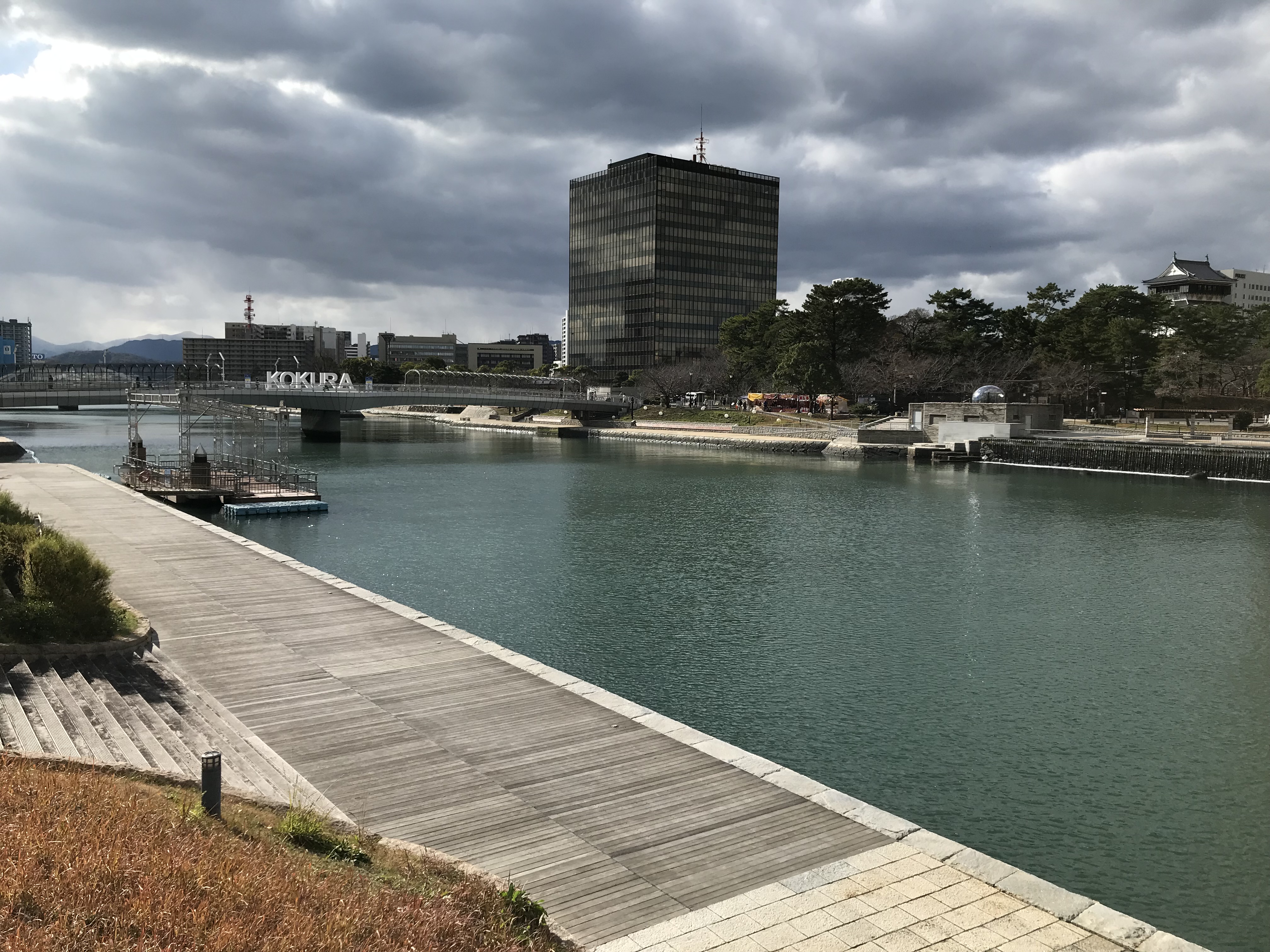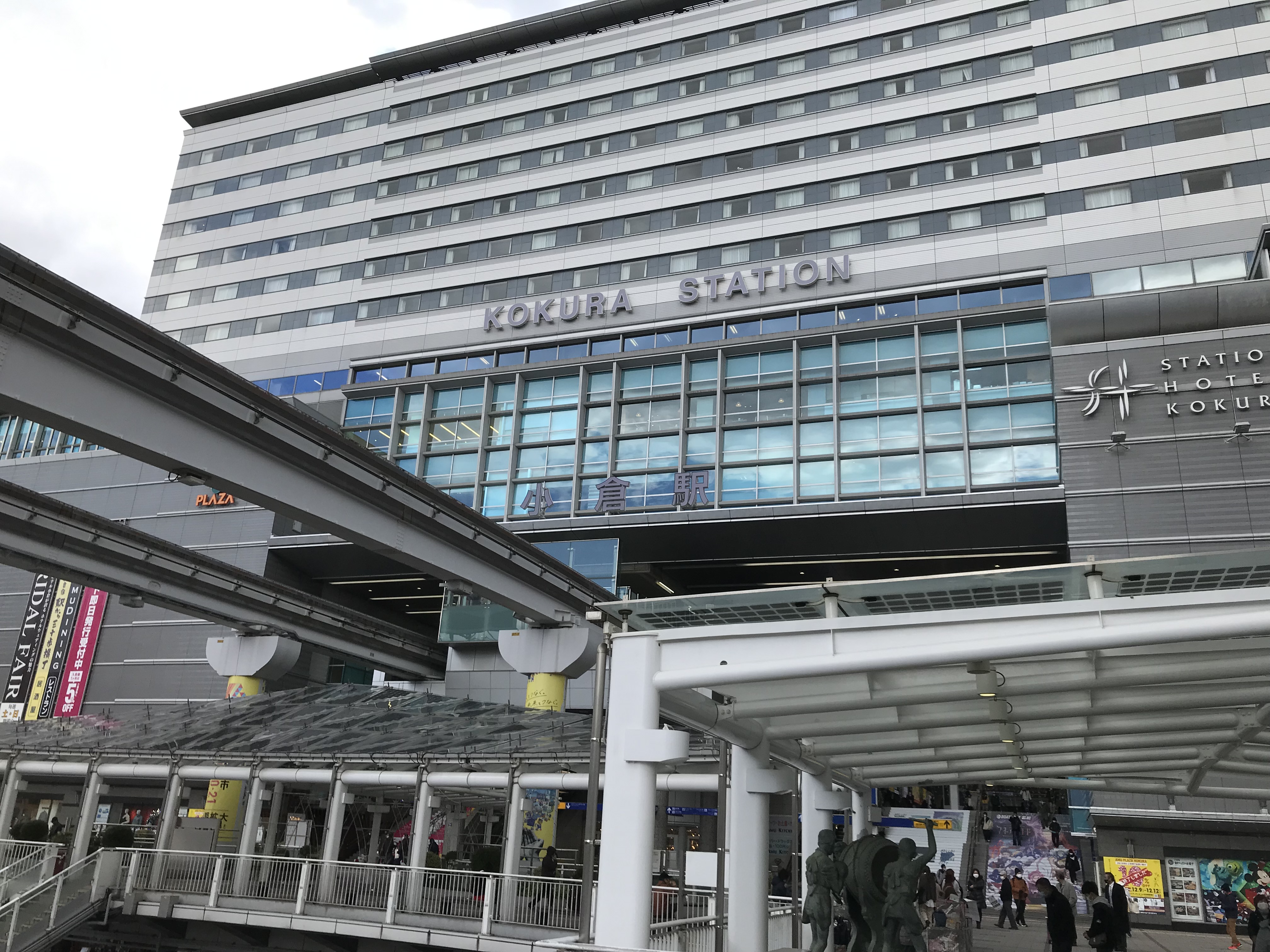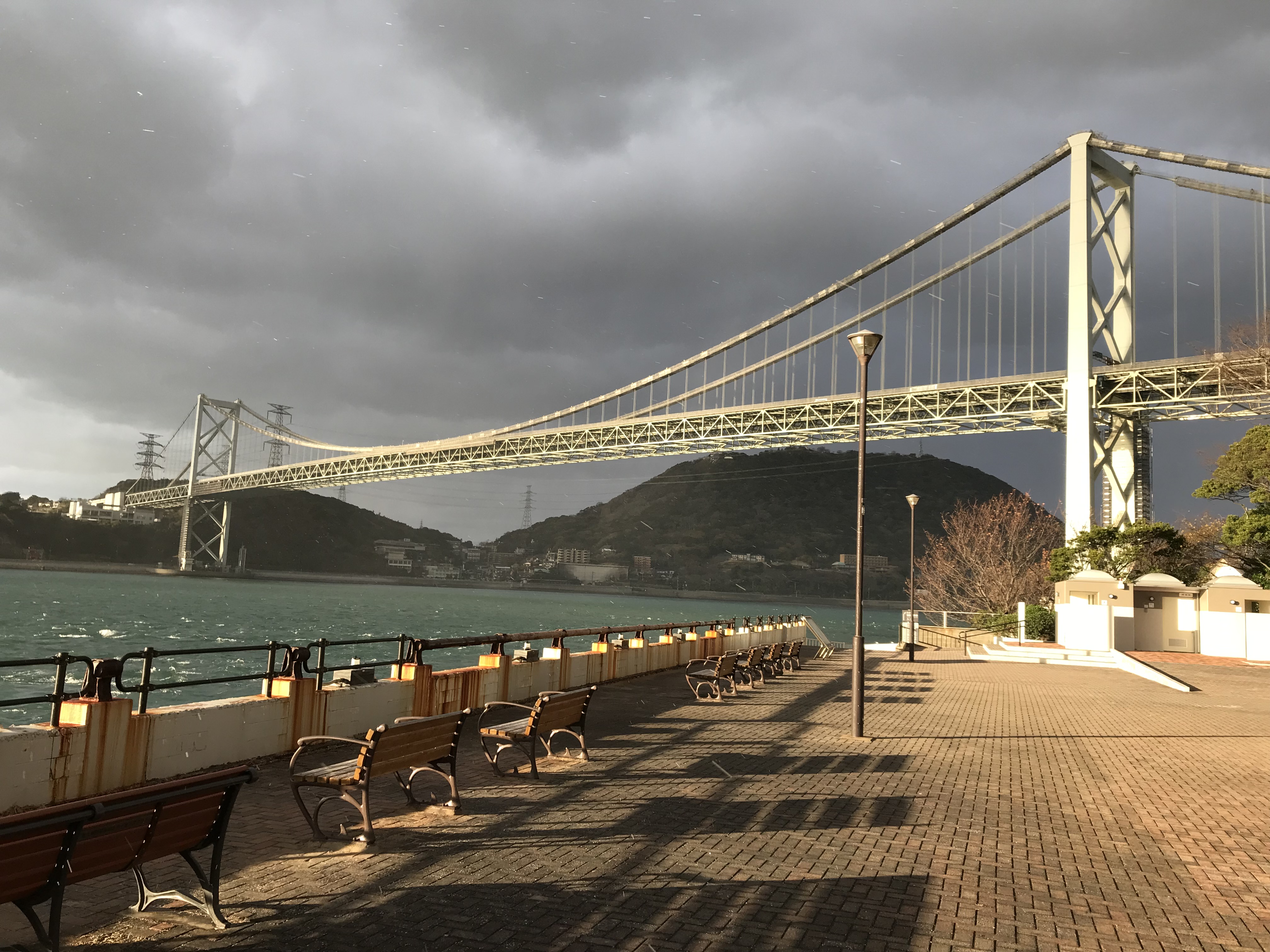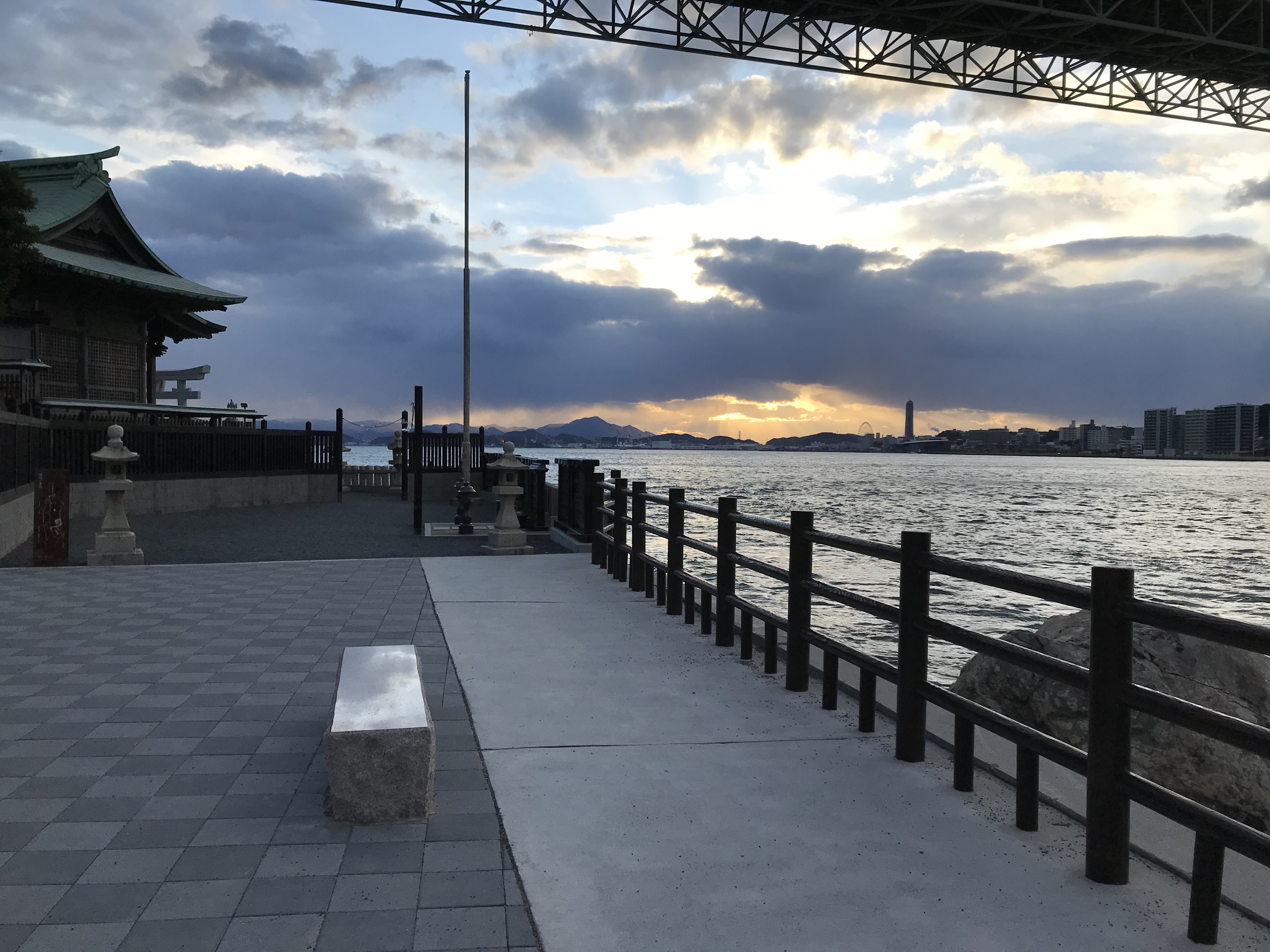Exploring Kitakyushu: Fukuoka Prefecture’s Evolving City

On Saturday, December 18, 2021, my fellow Fukuoka JETs and I visited Kitakyushu. I had previously passed through this bustling city via Shinkansen, and had wanted to visit since. Today was finally my chance.
Kitakyushu is a city rich in history, yet is ever evolving. This post details my activities during my visit, as well the city’s ever evolving nature.
About Kitakyushu
Kitakyushu is the second-largest city in both Fukuoka Prefecture, and the island of Kyushu. With a population of under 950,000 (and declining), the city is famous for its steelworks and various industries.
The modern city of Kitakyushu was formed in 1963, when several smaller cities, including Kokura and Tobata, merged to become one large, sprawling metropolis. In fact, Kokura was the original target of Fat Man, the nuclear bomb dropped over Nagasaki. Luckily, inclement weather protected the city from said bomb.
Shortly after the war, Kitakyushu became notorious for being the home of the Yakuza. In fact, Japan’s most-infamous yakuza group, the Kudo Kai, are based here. Due to the negative reputation of the city, Kitakyushu residents have taken drastic measures to reclaim their city.
In addition, due to the city’s industries, Kitakyushu used to be very polluted. Nowadays, the city is focused on Sustainability Development Goals, or SDGs, promoting environmentalism while showing off the modern, clean city it has become.
What We Did
While my friends took the highway bus, I boarded the Limited Express Sonic between Hakata and Kokura. My smooth and speedy train ride aboard a JR Kyushu 885 series trainset lasted 46 minutes and took me through suburbs and rice paddies. We reached speeds of up to 80 miles per hour as we passed by local and rapid trains a plenty.

Riverwalk Kitakyushu

Upon arriving at the modern cathedral that is Kokura Station, we met up and quickly walked along the Murasaki River towards the Riverwalk shopping mall. Designed by Los Angeles-based architect Jon Jerde, the stunning mall opened in 2003 as part of a city revitalization project. The mall’s design is similar to Hakata’s Canal City, which opened in 1998.
As I learned more about the Riverwalk, I stumbled upon more connections to my life. I learned that Jon Jerde designed several other shopping malls I’ve been to. Jerde’s shopping mall portfolio includes Universal CityWalk, Fashion Island, and even Roppongi Hills.
Kokura Castle

Across the river was Kokura Castle, considered the grandest remaining castle in Kyushu. While the modern-day structure was built in 1959, the grounds were rich in history. There were statues commemorating Miyamoto Musashi’s duel with Sasaki Kojima, among other artifacts. We explored and learned about Japanese scholars, leaders, warriors, and took pictures of the surrounding cityscape.
As with most Japanese castles, Kokura Castle was reconstructed. The original burned down in the 1800s, and the modern structure isn’t even on the same grounds. Regardless, it was a stunning castle located just a short walk from Kokura Station.
Mojiko

Next, we boarded the train from Nishikokura to Mojiko, the terminus of the Kagoshima Main Line. The station building, built in 1914, is one of the oldest operating railway stations in all of Japan. The station itself has been open since 1891, and the current structure was renovated in 2018.
We grabbed lunch at Bear Fruits, a nearby restaurant famous for their Baked Curry. Baked Curry is a Kitakyushu specialty consisting of Japanese curry, rice, beef, and bananas. The walls of the small restaurant were adorned with letters from famous visitors, showing just how well-known the restaurant is.

The curry was delicious, and perfect for today’s semi-snowy 40ºF weather. The hot dish was tasty, yet not very spicy. The beef chucks were tender, and the hint of banana was a rather interesting touch. The rice was sticky and reminded me of sushi rice. I will definitely be going back here the next time I’m in the area.
We then explored the waterfront of the Mojiko-Retoro (yes, that’s how they spell “Retro”) area, an historic district showcasing the European-style architecture of the area. We continued walking towards the Kanmon Bridge as we made our way towards Shimonoseki in Yamaguchi Prefecture.
The Kanmon Bridge and a Brief Stop in Shimonoseki

The Kanmon Strait is a narrow body of water which separates Honshu from Kyushu. The two islands were connected via the Kanmon Kokudo Tunnel in 1958, which includes a pedestrian tunnel. The strait was later bridged by the Kanmon Bridge, which opened in 1973.
We first visited Mekari Shrine, which was built by Empress Jingu during the 3rd Century invasion of Korea. While here, my friends and I prayed and donated some yen in exchange for fortunes. According to my CIR friend, I received good luck.
We then descended down the banana-dolphin themed elevator on the Mojiko side of the strait to the Kokudo pedestrian tunnel. We resurfaced in Shimonoseki in Yamaguchi Prefecture, the southernmost city on Honshu, and a suburb of Kitakyushu. While I hope to explore Shimonoseki and learn about its rich history, I can’t offer much today. The only fact I can offer up today is that it’s former Prime Minister Shinzo Abe’s hometown.
While walking in Shimonoseki, we briefly visited an inari shrine located next to the Kanmon Bridge. Next, we stopped at Akama Shrine, a rather unique shrine dedicated to Emperor Antoku, who was drowned by his grandmother after his clan lost the Battle of Dan-no-Ura in 1185. Sadly, I don’t have photos due to my phone dying while crossing the Kanmon Strait. I highly encourage you to search for images of Akama Shrine, it’s absolutely stunning.
We Had Dinner, But I’m Concluding Now

Today’s adventures were quite fun. My feet were left aching due to breaking in a new pair of boots, but it was well worth it. I plan on revisiting both Mojiko and Shimonoseki in the near-future as I want to better appreciate what both places have to offer.